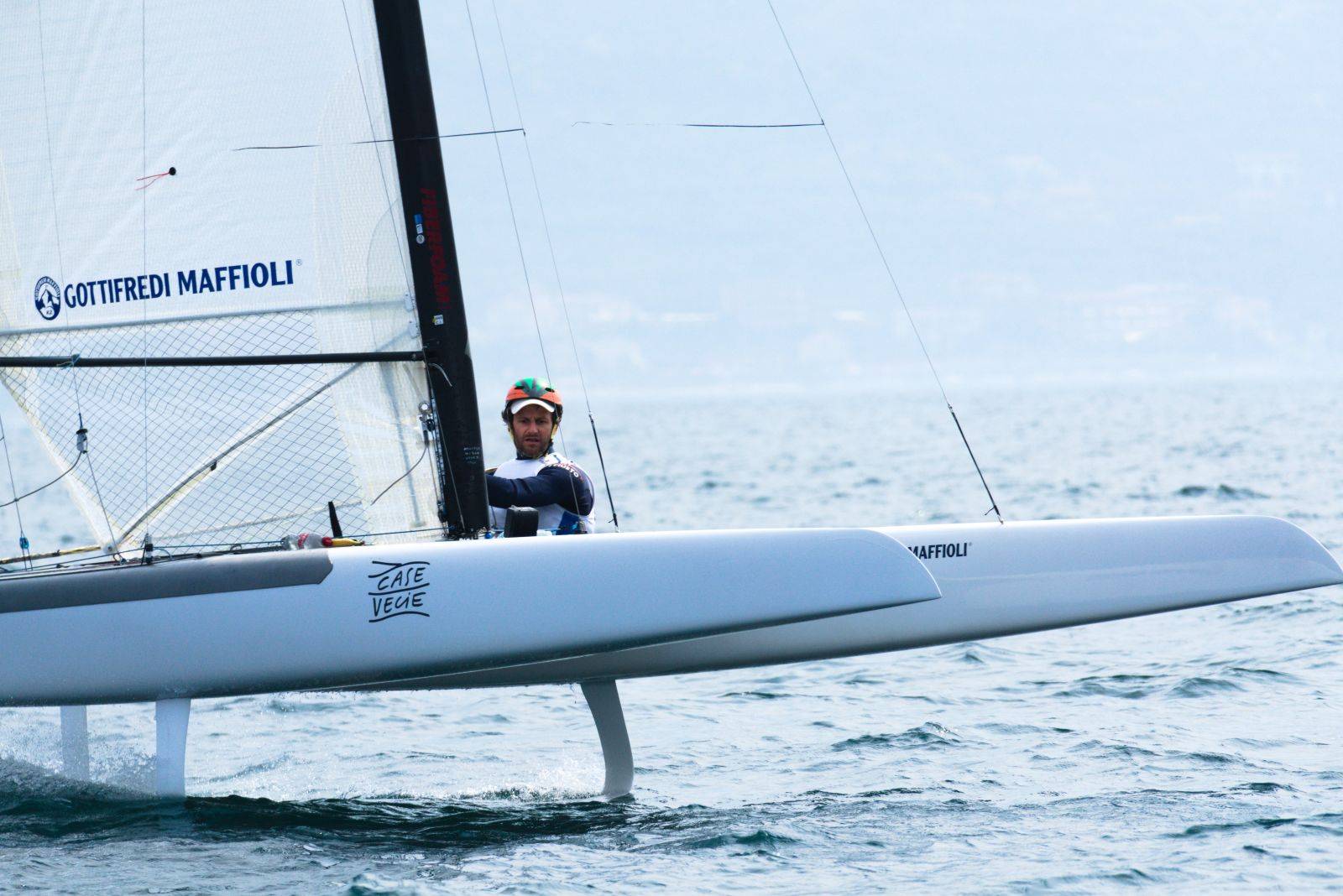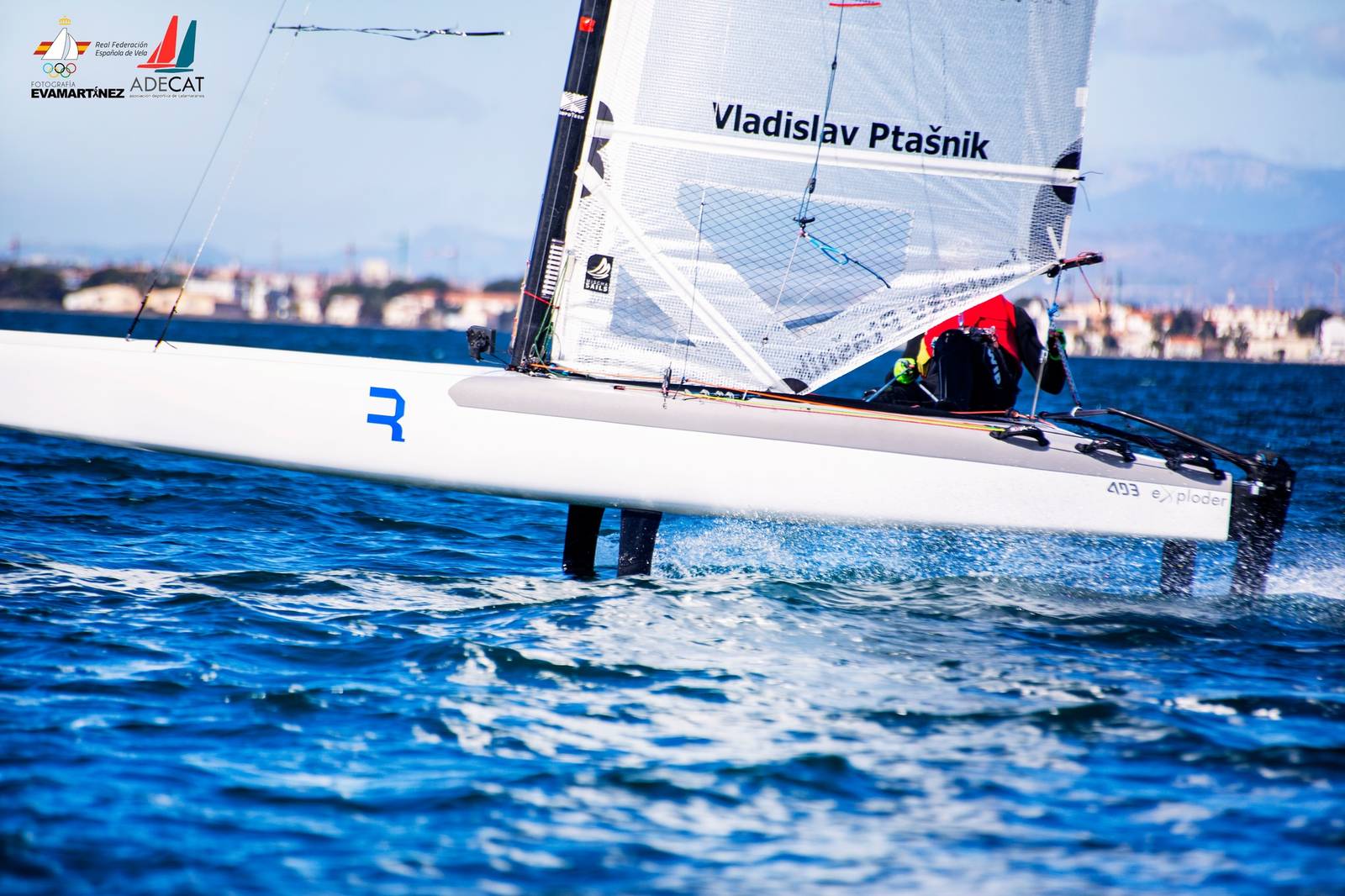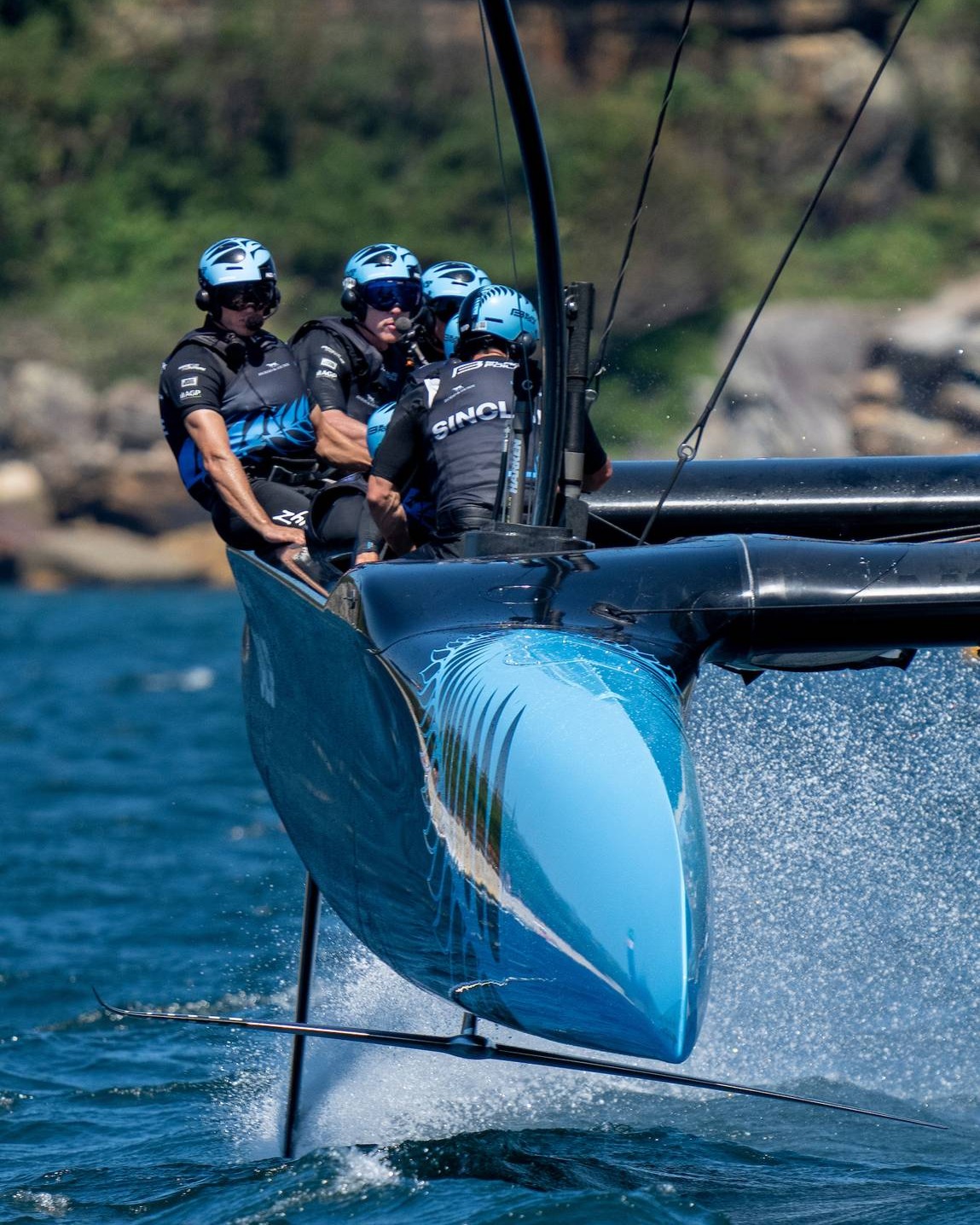AC72: The future is Now

AC 72 Renders by Morrelli&Melvin
AC 72 Renders by Morrelli&Melvin Alinghi for sure was a starting point for this new class, as it was a pioneer in the big racing cat solution (way bigger than Conner’s cat). Many Tris built before, but cats have some structural issues to solve at this scale and Alinghi designed some interesting concepts, of course they missed the Wing and they had some issues with volume distribution on the hulls as agreed by Martin Fischer, he also pointed that Alinghi was a perfect scaled up A-Class, and we wrote here many times before that feature was a huge design error considering the final rig used, an A-Class as we all know is designed only for a main sail without jib or Spi.
Alinghi for sure was a starting point for this new class, as it was a pioneer in the big racing cat solution (way bigger than Conner’s cat). Many Tris built before, but cats have some structural issues to solve at this scale and Alinghi designed some interesting concepts, of course they missed the Wing and they had some issues with volume distribution on the hulls as agreed by Martin Fischer, he also pointed that Alinghi was a perfect scaled up A-Class, and we wrote here many times before that feature was a huge design error considering the final rig used, an A-Class as we all know is designed only for a main sail without jib or Spi.
Note the volume of this render at least in the bow, a more practical hull form, with a high freeboard in front.
But we’ll have to wait to see more of the AC 45s, and also being a “Box Rule” like the Formula 18 concept we might get some intresting alternatives in the platform design and on wings too for the AC72 Class.
The C-Class guru’s phones must be ringing hard these days, hope to see some of them working for an AC team. I’m preparing an Interview with Steve Clark right now, also some feedback from Martin Fischer, stay tuned. Alinghi Photo: Guido Trombetta / Alinghi
——-
From Americascup.com – The America’s Cup has pioneered yacht design for 159 years.
In the 34th America’s Cup the best sailors in the world will meet their ultimate match; the fastest boat in the world. Technology returns to the fore with the AC72 wingsail America’s Cup catamaran, capable of regularly exceeding speeds of 30 knots.
The AC72 will excite fans as it zips around the racecourse with one hull in the air. Equally important, it will leave the crews exhilarated and drained after a day of adrenaline-fueled racing.
…
There will only be 11 crewmembers, six fewer than the heavy-displacement ACC monohull it replaces.
“The AC72 Class adds a new dimension to America’s Cup design and technology,” said Pete Melvin, a chief architect of the rule and champion multihull sailor. “The AC72 will place exacting demands on the helmsman, crew and support team that the vast majority of us who call ourselves ‘weekend racers’ could never hope to develop.”
The new class of America’s Cup catamaran is a tightly defined “box rule.” Certain parameters have been set, such as overall length, beam, displacement and sail area. Other factors are limited to keep the competition close across all wind speeds.
So that no team would have an unfair advantage by creating the rule, US SAILING and Morrelli & Melvin Design & Engineering authored the rule.
 “Near the beginning of the process we were requested to look at a catamaran instead of a trimaran because it’s easier to transport, assemble and disassemble,” Melvin said.
“Near the beginning of the process we were requested to look at a catamaran instead of a trimaran because it’s easier to transport, assemble and disassemble,” Melvin said.
“The difference in the performance characteristics is not significant, and a cat was judged less expensive to build. From there, the experience of two America’s Cups in which wingsails were used (1988 and 2010), coupled with the latest developments in wingsail technology, made it natural to morph the design rule into a catamaran with a wingsail,” said Melvin.
AC72 approximate dimensions:
LOA – 22.0 meters (72 feet)
Beam – 14.0 meters (46 feet)
Displacement – 7,000 kilograms (15,500 pounds)
Wingsail area – 300 square meters (3,229 square feet)
The catamaran will be able to fly a hull in 5 to 6 knots true windspeed. The target boatspeeds in winds under 10 knots were set at 1.2 times the true windspeed upwind and 1.6 times true windspeed downwind.
High speeds are derived from enormous power. The AC72 has a righting moment of approximately 60-ton-meters. Determining the sail plan dimensions was difficult because the boat has to be powerful in light winds and not overpowered in stronger winds.
“It’s been challenging to have the cat fully powered-up and flying a hull in light winds, yet also able to sail in 30 knots,” Melvin said. “We put a lot of time and effort into sizing the wingsail and the platform dimensions in order to sail in that full range.”
The height of the wingsail will be approximately 40 meters (130 feet) with a maximum chord length between 10 and 11 meters (32 and 36 feet).
Two options for depowering are removable flaps on the upper leech or a removable mast tip. Both options would reduce sail and weight.
With such a wide boat, additional structure has been required to optimize the longitudinal stability of the AC72 to dampen flexing and to resist the high forestay loads.
A draft of the AC72 Rule has been completed and the final rule will be issued by September 30.
Other highlights of the new class:
* Ease of assembly: The AC72 can be assembled in two days and disassembled in one to accommodate the shipping schedule for the America’s Cup World Series events.
* Platform configuration: Either a conventional layout catamaran, one with cockpits and helmsman stations in both hulls, or teams will have an option of designing a central pod to centralize all the wing and sail-handling controls.
* Wingsail or soft sails: The AC72 class rule allows for wingsail and soft sail options to promote racing through a broad range of conditions.
* Power source: Engines are banned but electrically driven valves to control the wingsail might be permitted.
* Rudders and daggerboards: The rule limits a maximum of four underwater appendages, two rudders and two daggerboards. To reduce costs, standardized, one-design daggerboards are being considered.
* Construction materials and methods: Limits on high-modulus carbon-fiber have been put in place for hull construction. The class rule outlines a minimum outside skin weight of 600 grams per square meter, similar to other racing boats of that size. Core materials may either be foam or honeycomb. High-modulus carbon will be allowed in the wingsail, to add stiffness and strength.
* Onboard cameramen will be carried during racing
—–
https://www.americascup.com/features-stories/new-america%E2%80%99s-cup-era-begins-with-wingsail-catamaran/




























looks like the AC72 is a large Nacra F20!!